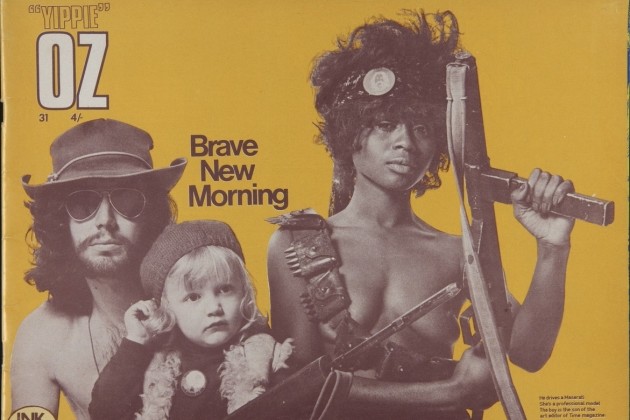The Power of Pictures, the final exhibition of the Beinecke Rare Book & Manuscript Library’s 50th anniversary celebration, draws on the library’s collections to explore how people throughout the ages have used images to tell stories, document their lives, and define their worlds.
The exhibition, which opened October 4, features a remarkable range of materials spanning hundreds of years and dozens of cultures, from woodcuts to photographs, diagrams to cartoons, revolutionary posters to children’s books.
“More so than ever, we live in a world saturated with images,” George Miles, curator and coordinator of the exhibition, said. “This exhibition reminds us that our contemporary experience of flat-screen TVs, smartphones, and billboards has deep historical roots, going back to the earliest cave paintings 40,000 years ago.”
The exhibition is divided into four sections:
- Symbolic Pictures: Examines how people have used symbols to convey their values, arouse emotion, and express their identities. It incorporates examples of religious iconography, paintings, and body art. Pieces include an illustrated prayer book that Sir Thomas More jotted prayers in while imprisoned in the Tower of London.
- Pictures of Record: Documents how people have used images to share experiences, record events, and engage in protest and social criticism. Pieces include a set of 1847 daguerreotypes from the Mexican War – the earliest known photographs of warfare; the Romanov family photo albums; and a notebook of “Doonesbury” creator Gary Trudeau.
- Pictures with Words: Shows how people have used images to compliment and enhance written text. It features examples of 15th century religious texts, children’s literature and surrealism. Pieces include a drawing for “The Pickwick Papers” featuring Charles Dickens’ handwritten notes to the illustrator.
- Pictures at Work: Explores how people have used images to describe and manipulate the world. It features scientific and architectural illustrations, revolutionary artwork, and comic books. Pieces include an early 16th century copy of Italian architect Francesco de Giorgio Martini’s drawings and designs for a series of fortresses that he constructed, and artist William Henry Holmes’ exquisitely detailed drawings of the Grand Canyon.
The Power of Pictures, which is free and open to the public, closes December 16. It is the third in a series of exhibitions to mark the library’s 50th anniversary. The first exhibition, By Hand, explored manuscript culture and the second, Permanent Markers, documented the history and impact of printing on society.
The Power of Pictures is accompanied by a gallery guide of the same name, available from the library. To view an online version of the exhibition, visit http://beinecke.library.yale.edu/exhibitions/power-pictures
